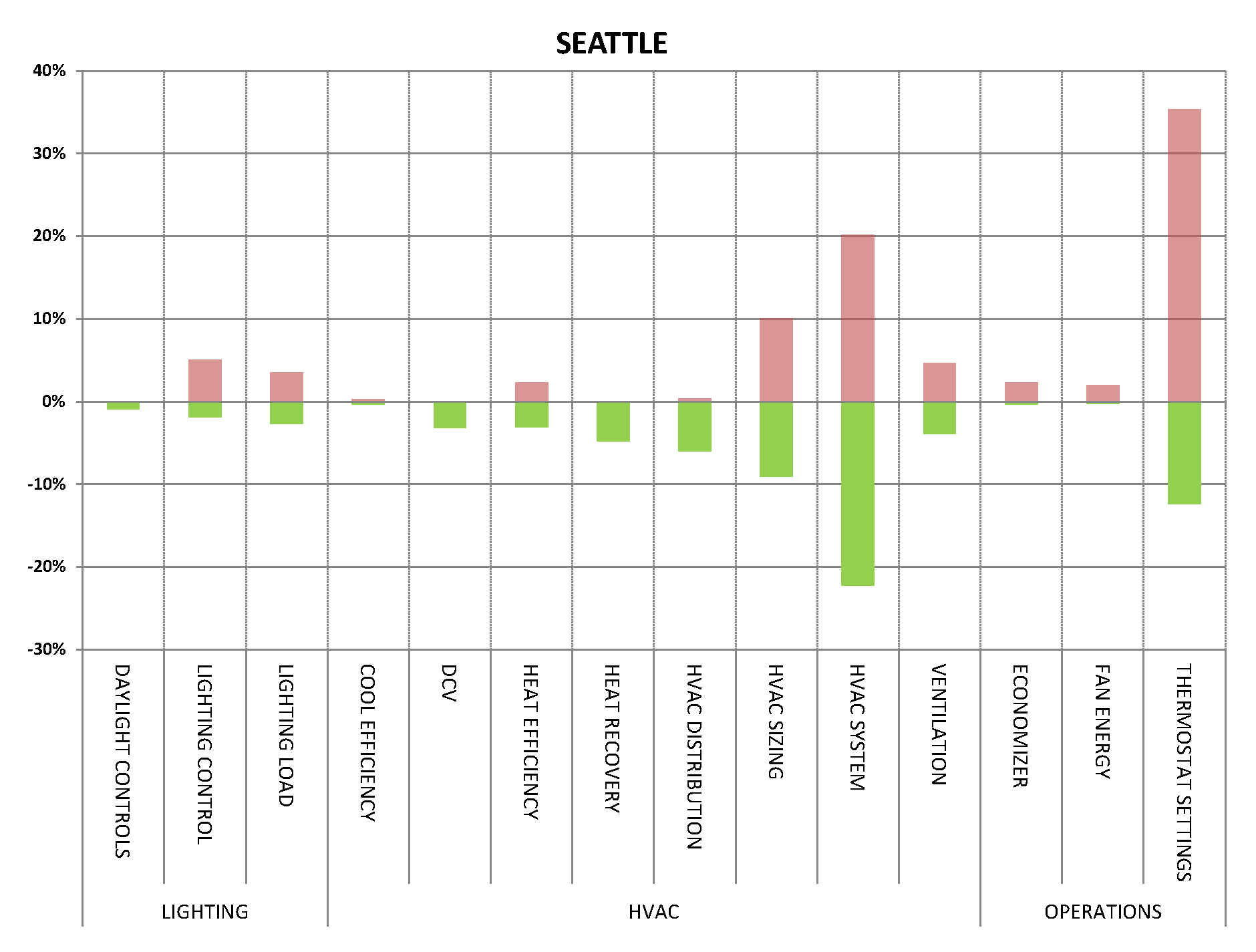Sensitivity Analysis
Our Team
This study compares the magnitude of energy impact that modifications to design, operation and tenant behavior characteristics have on total building energy use.
What We Did and How
The study seeks to quantify the degree to which occupant behaviors affect building energy use, and compare these ‘operational variables’ to the relative impact of common variations in building design.
Using eQUEST, a suite of 28 variables was selected to represent the physical features of a building; HVAC, lighting, control system, operations; tenant behavior; and climate. For each variable, a range of inputs was developed to represent the typical spread found in the field. The range of inputs for each variable was then applied to a prototype “medium” office building developed by NREL using the DOE2.2E batch processing module.
The Results
Although nearly everyone interacts with buildings on a daily basis, if you were to ask most people about building energy efficiency, the vast majority would describe physical features like insulation, efficient HVAC and lighting, or alternative energy systems.
The perception in the market is that the responsibility for building energy performance is in the hands of architects and engineers and is relatively set once the building is constructed. This perception represents a significant barrier to broad societal goals to substantially improve building energy performance, and it reflects an extremely inaccurate perception of how buildings actually work. In fact, a significant percentage of building energy use is driven directly by operational and occupant habits that are completely independent of building design, and in many cases these post-design characteristics can have a larger impact on total energy use than many common variations in the design of the building itself.
This study was designed to try to quantify the degree to which operational energy-use characteristics affect building energy use and compare these variables to the relative impact of what are typically considered building design characteristics. While the results of this study are informative to the design community in prioritizing energy efficiency strategies for buildings, they have even more significant implications on how buildings are operated and occupied and on how design teams should communicate information about building performance to building owners, operators and occupants. The results of this study can provide a broader perspective on how buildings use energy and which aspects of building energy performance deserve more attention in design, operation and policy strategies.
The analysis demonstrates the relative impact of a range of variables affecting building design and operation on building energy performance. These variables include physical features of the building; HVAC, lighting and control system characteristics and efficiencies; operational strategies; tenant behavior characteristics; and climate, all of which affect building energy use. For each variable, a baseline condition was defined based on typical building characteristics. A range of outcomes that represent good and poor responses to these variables was identified. All of the variable ranges used in this study are based on research and field observations of
actual building performance characteristics that can be found in the existing building stock; they do not represent extreme or theoretical conditions.

